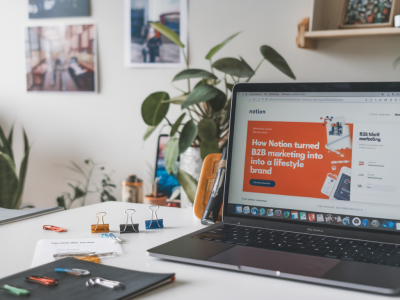
If you’ve noticed your email open rates steadily declining—even though your content hasn’t changed much—you’re not imagining things. As someone who has worked on dozens of email campaigns across industries, I’ve seen this happen to both seasoned marketers and beginners. It’s frustrating, isn’t it? You put in the work, follow the best practices, and still your audience seems to be ghosting you.
But here’s the truth: it's not just about your subject lines anymore. There’s a hidden shift happening in the email marketing landscape—and understanding it is key to fixing those dwindling open rates fast.
It’s Not You, It’s Your Email Provider
Over the past couple of years, major email platforms—especially Apple Mail and Gmail—have started implementing more aggressive privacy features. Take Apple’s Mail Privacy Protection (MPP), introduced with iOS 15. This feature preloads emails on its servers, making the traditional "open rate" metric almost meaningless in some cases. Apple users could appear to have “opened” an email without ever laying eyes on it.
So, the first thing I remind my clients and readers is: Don’t panic if your reports look off. Open rates have become less reliable, especially if your subscriber base heavily uses Apple devices. Instead, let’s focus on what you can control and how to optimize for the new reality.
Deliverability: The Silent Killer
Your email could be well-designed, carefully written, and even triggered at the perfect time—but what if it never reaches the inbox in the first place?
Deliverability is one of the biggest—and most overlooked—factors in shrinking open rates. And trust me, I've been there. I once managed a campaign where a sudden drop of 15% in open rates turned out to be due to SPF/DKIM misconfigurations we hadn't noticed. Lesson learned!
To improve deliverability, make sure you:
- Authenticate your emails using SPF, DKIM, and DMARC records
- Maintain a clean email list by removing inactive subscribers regularly
- Avoid spammy language in your subject lines and body (words like “Buy now,” “Free,” or excessive emojis)
- Send consistently and avoid erratic emailing behavior
Are You Still Segmenting Like It’s 2010?
Another reason your open rates may feel lackluster is that your segmentation strategy is out of date. We’re not in an era where a basic “Newsletter” list is enough. Users expect personalized, relevant content—delivered to them when it makes sense.
I often recommend segmenting based on:
- Past purchase behavior
- Level of engagement (active vs. dormant subscribers)
- Location and time zone
- Lifecycle stage (new subscriber, cart abandons, VIP customers)
When I worked with a skincare e-commerce brand last year, we segmented their list based on skin type, product preferences, and purchase frequency. Not only did their open rates climb by 23%, but their click-through and conversion rates also doubled.
Fix Your Timing: It's More Critical Than Ever
Timing isn’t just about finding the “magic hour.” It’s about knowing your audience’s behavior and adapting. Yes, Tuesday mornings used to be the universal golden hour—but that doesn’t apply anymore, especially in the era of remote work and digital nomads.
This is why I always advise A/B testing send times and analyzing the data. Try sending your campaigns at different hours or even different days for segmented groups. You’ll likely discover surprising patterns. I once ran a campaign for a B2B SaaS tool, and we found Thursdays at 9:30 PM had the highest engagement—because our target group (founders and CTOs) read emails after their kids went to bed!
Subject Lines Still Matter—But Context Is Everything
Subject lines are still a key driver for opens—but context and familiarity matter even more now. Your subscribers won’t engage if they’ve forgotten who you are or why they signed up. That’s why reintroductions, like “Welcome back!” or “Still with us?” in cold lists, can re-capture attention.
Here are some approaches I’ve found effective lately:
- Use curiosity effectively: “This surprised even me…” or “You might regret missing this.”
- Personalized subject lines: “Anna, ready for your next adventure?” works better than generic messages.
- Use plain language and authenticity—cutting through the noise with realness is powerful in 2024.
Also, don’t forget preheader text. That little line of text previewed in inboxes is prime real estate to expand on your subject line and encourage the open.
Interactive and Rich Content Drives Future Opens
If your subscribers open your emails and consistently find boring, static content, they’re less likely to open the next one. Create expectations of value. Use rich media, such as:
- Interactive polls or surveys (using tools like Stripo or Mailmodo)
- GIFs or product previews that show movement
- Countdown timers for limited offers
One of the most successful re-engagement campaigns I helped launch included a one-question poll right in the email—“What content do you want to get from us?” We offered just three options and saw a 35% reply rate from previously inactive users. That tells me something: people crave interaction.
Focus on Meaningful Metrics Beyond Open Rate
Given how unreliable open rates have become thanks to privacy changes, I urge my readers at Marketing News to pay closer attention to:
- Click-through rate (CTR): A clean metric that tells you actual engagement.
- Conversion rate: Because if you're selling, this is what truly counts.
- Email replies: Especially if you're running a personal brand or doing B2B outreach—it shows real interest.
- List growth and unsubscribe rate: These help you monitor the health of your overall email list.
Track these consistently over time, and you’ll gain a more accurate picture of your campaign performance, even if open rates are no longer the north star.
One Last Tip: Ask for Feedback
This is something I always recommend but rarely see brands actually implement: just ask your audience what they want. It doesn’t need to be sophisticated—a simple "What kind of emails would you prefer to receive?" with a few quick options can go a long way.
Not only does it make your subscribers feel valued, but it also gives you actionable insights into what will make them open and engage with future emails.
I’ve seen incredible transformations happen—email engagement rising from 8% to over 30%—just by shifting from a one-directional broadcast to a two-way conversation.

